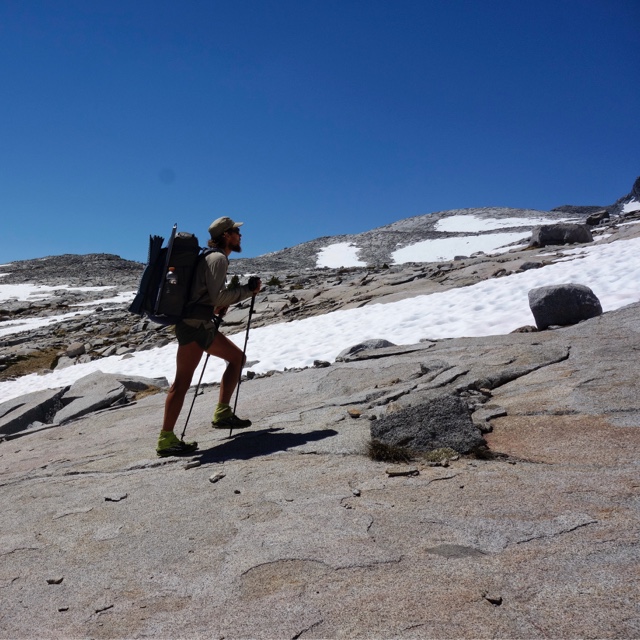Foundations: Form
Ill apologize in advance for our absence lately. The last few weeks have been incredible but we have not had cell phone service to share all of our thoughts. Alas, we are back to share our ramblings.
This week I will be introducing the first article of a monthly series we've decided to share. The series will be called the Foundations. The purpose behind this series is to share our primary areas of focus in regard to remaining healthy and happy while backpacking over 2,000 miles, again. The foundations include: Form, Strength, Efficiency and Grit. Throughout the remainder of this article I will focus on the first foundation, Form.
Form is a word you'll hear me say a ton on a daily basis. From the physical act of hiking well, to me nodding my head and praising others for doing an act with good form, it is a integral part of our daily lives. Form is the first foundation we strive for because it has such a profound effect on everything we do, including the subsequent foundations.
At this point you may be wondering what good form looks like. In terms of hiking with good form, I look at posture, stride length and foot placement. Let it be known that I'm by no means a medical professional and won't claim to be. All the knowledge I'm sharing is from research and experience, and should taken with a grain of salt, like all things.
Posture is critical for activating all of the muscle groups necessary to hike well. You want your core and butt working. If you hunch over, you may lose activation of the core and as a result put extra stress on other muscle groups and joints. One of the best ways I have found to get set into good posture is to do a plank exercise before I get going or to imagine that their is a string tied to the top of my head, and right before I start walking I pretend that someone is pulling the string straight up. This puts me in a good upright position and I almost always feel my stomach tighten up, reminding me that my core is in the game. When going uphill, just aim your sternum up to where you wanna go. This allows you to lean into the hill but keeps your core and back aligned and engaged. After you feel solid on posture, you're ready to walk. Stride length and foot placement come next.
Stride length is the next big piece to good form. Lots of people over stride when they walk. This causes an over extension of the leg, practically snap kicking the knee with every step. Don't believe me? Take a moment to watch people walk down the street. Now focus on their knees and watch how they snap and over extend during each step. This works for short distance travel, but when your walking a long distances you have to reel in that stride. Granted, it's not always our fault we over stride. Cushy heeled shoes make it easy to take long strides. If you take your shoes off and start walking around, you will notice that your stride will naturally begin to tighten up. This is a great way to practice but in most of our realities we have to wear some form of footwear. I suggest playing the mental game again. Imagine that your foot is landing under you during each step. Don't look at your feet, just walk. In reality, your foot is extending some but your knee will no longer extend to the moon and back. Eighty percent of the time I start getting a sore knee it's because I start getting lazy and begin over striding or my posture has gone to hell.
The last piece I'll cover for good physical form is foot placement. Yes, it is exactly as it sounds. Putting your foot in the right place can be important. Of course we don't want to step in holes or on sharp rocks. What I mean by good foot placement is where your foot is pointing when it lands. One thing that often happens during a long day of hiking is a tiring of the muscles. No brainier right!? The muscles in the feet are sometimes not given as much attention as our calves and quads, but the foot muscles are equally as important. Once the arch gets tired it can collapse causing some discomfort and many times a change in form. If you imagine your foot on a clock, good foot placement will have your foot pointing in the direction of the 12 on the clock during each stride. Once the arch gets tired you will see that foot begin to flare out and your foot may begin to point more toward the 2 o'clock position to compensate. This starts a chain reaction which I've found leads to pain in the knee and hip.
This series of events is by no means the cause of all legs pains, but it is one that I've found plays a large role in my personal break down during long distance trips. My father has been a medical professional for over 35 years and always reminds me of the importance of a strong foundation. Many hip and leg issues he addresses start in the feet. I make sure to give myself a foot massage nightly. This has helped tremendously in preventing the above series of events. Again, my cents.
I hope this information gives a little insight into how we approach hiking. Until next time, stay healthy and by all means stay positive.
Cheers,
Cap









I have read your blog, it's awesome you are sharing wonderful experiences.
ReplyDeleteYou are sharing an amazing feature.
ReplyDeleteThis looks awesome. thanks for sharing your experience and would love to see more posts like this in future. May be some videos next time.
ReplyDelete